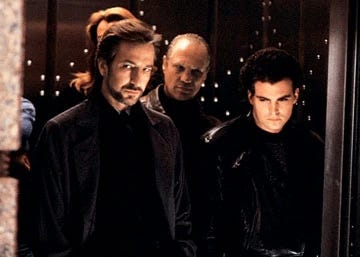Continuing our discussion on Villains and Antagonists in general, and Die Hard in particular!
Sequence 1 of Die Hard was quite a bit about setting up the iconic protagonist, John McLean. Sequence 2 is largely about setting up the possibly even more iconic villain: the inimitable Hans Gruber, and his TEAM of henchmen.
In my breakdown I’m pointing out what …
Keep reading with a 7-day free trial
Subscribe to Screenwriting Tricks for Authors to keep reading this post and get 7 days of free access to the full post archives.



